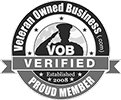With open enrollment season upon us, many people are reviewing their benefits and asking the same question: “Should I choose an HSA or an FSA? and how do I make the most of it?” If you’ve wondered the same, you’re in good company. These tax-advantaged accounts can play an important role in your financial and retirement planning, but they’re often overlooked or misunderstood.
Let’s break down what these accounts are, how they benefit your financial plan, and the smart moves you can make before year-end.
Why These Accounts Matter More Than You Think
Both Health Savings Accounts (HSAs) and Flexible Spending Accounts (FSAs) allow you to set aside money for eligible medical expenses before taxes are applied. That means more of your income stays with you instead of disappearing to taxes, and that’s a great feeling.
Before we get into strategy, here’s a quick refresher:
Health Savings Account (HSA)
Available only with high-deductible health plans (HDHPs), HSAs offer three powerful tax advantages:
- Tax-deductible contributions
- Tax-free growth
- Tax-free withdrawals for qualified medical expenses
Additional features clients often miss:
- Portability & rollover: The account is yours and rolls over year to year.
- Contribution flexibility: You can generally change HSA contribution amounts during the year (subject to annual limits and eligibility).
- Investing: Many custodians let you invest balances once above a threshold, turning the HSA into a stealth, healthcare-focused retirement bucket.
Tip: The “last-month rule” can allow a full-year HSA contribution if you’re HSA-eligible on December 1st (with a subsequent testing-period requirement).
Flexible Spending Account (FSA)
FSAs are typically offered with traditional PPO plans. Contributions are pre-tax and reduce your taxable income. While FSAs don’t offer investment growth like HSAs, they still provide meaningful tax savings and help offset expected healthcare costs.
- Day-one access: Your entire annual election is available on the first day of the plan year.
- Change limits: You generally can’t change your election mid-year unless you have a qualified life event (marriage, divorce, new child, etc.).
- Use-it-or-lose-it (with exceptions): Many plans offer either a short grace period or a small carryover (not both). Check with your plan sponsor.
If you have an HSA, ask if your employer offers a Limited-Purpose FSA (dental/vision only). It can stack with an HSA without breaking eligibility.
The Financial Planning Benefits
1. Reduce Your Taxable Income
Every dollar you contribute to an HSA or FSA lowers your taxable income. That can mean immediate savings today, especially helpful in a year when inflation has made everything feel a little pricier.
2. Build a Healthcare Safety Net
Medical costs are unpredictable, but your plan doesn’t have to be. Setting aside funds now ensures you’re prepared for the unexpected.
3. A Hidden Retirement Advantage (HSA Only)
This one’s a favorite among financial planners: once you turn 65, HSA withdrawals can be used for any purpose (you’ll just pay ordinary income tax if it’s non-medical). Before that, medical withdrawals remain completely tax-free.
It’s an incredibly flexible tool that supports both your short- and long-term financial goals.
Smart Moves to Make Before December 31st
1. Review Your Year-to-Date Contributions
Are you close to maxing out your HSA? For 2025, limits are as follows:
- Individual: $4,300
- Family: $8,550
- Catch-up (55+): Additional $1,000
If you have the flexibility, increasing your contribution before year-end can provide valuable tax savings.
For FSAs, check your elected amount and how much you’ve spent. If you’re behind, now’s the time to map out what’s left because…
2. Don’t Lose FSA Dollars
Unlike HSAs, most FSAs operate on a “use it or lose it” model. Some employers offer a short grace period or allow a small rollover, but even then, it’s limited.
Ways to use remaining funds:
- Schedule medical, dental, or vision appointments
- Refill prescriptions
- Stock up on FSA-eligible essentials (bandages, sunscreen, OTC medications, etc.)
- Update eyeglasses or contact lenses
Your future self (and your wallet) will thank you.
3. Adjust Next Year’s Contribution Based on Reality, Not Guesswork
Open enrollment is the perfect time to reflect: Did you overestimate or underestimate this year? Adjusting based on real usage will help you strike the right balance for next year.
Keep in mind, contribution limits are also changing in 2026, see below:
Health Savings Account (HSA) 2026 limits
- Individual: $4,400
- Family: $8,750
- Catch-up (55+): Additional $1,000
Health Flexible Spending Account (FSA) 2026 limits
- Annual contribution limit: $3,400
- Carryover limit: $680
4. If You Have an HSA, Consider Investing Your Balance
Many people leave their HSA in cash without realizing they can invest it once it reaches the account’s minimum threshold. Long-term, this can help your HSA grow like a supplemental retirement account.
Bringing It All Together
Whether you choose an HSA or FSA, these accounts can be incredibly valuable when paired with a thoughtful financial plan. They help reduce taxes, prepare for medical expenses, and, in the case of HSAs, even support retirement goals.
If you’d like personalized guidance on how these accounts fit into your broader financial strategy, the team at Trajan Wealth is here to help you make the most of your benefits during open enrollment and beyond.


